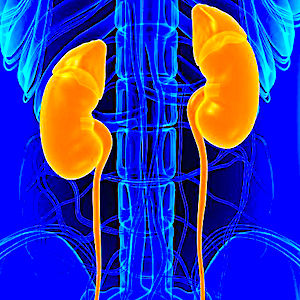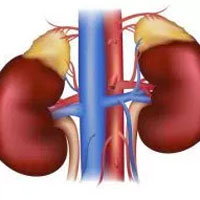Tag: mortality

ICU Usage for Pneumonia Doubles Length of Hospital Stay
A recently released report using data from the National Hospital Care Survey (NHCS) verifies existing data on the prevalence of pneumonia in hospitalizations and emergency department (ED) visits and provides the first-ever... read more

New York State Sepsis Reporting Mandate Appears to Improve Care and Reduce Deaths
A New York State requirement that all hospitals report compliance with protocols to treat severe sepsis and septic shock appears to improve care and reduce mortality from one of the most common causes of death in those who... read more

Hospital Variation in Risk-Adjusted Pediatric Sepsis Mortality
Margaret Parker, MD, MCCM, speaks with Stefanie G. Ames, MD, about the article "Hospital Variation in Risk-Adjusted Pediatric Sepsis Mortality," published in the May 2018 issue of Pediatric Critical Care Medicine. Dr. Ames... read more

Epidemiology and Changes in Mortality of Sepsis After the Implementation of Surviving Sepsis Campaign Guidelines
This is a prospective, multicenter, observational study performed during a 5-month period in 2011 in a network of 11 intensive care units (ICUs). We compared our findings with those obtained in the same ICUs in a study conducted... read more

Effect of Early vs Delayed Initiation of RRT on Mortality in Critically Ill Patients With AKI
Among critically ill patients with Acute Kidney Injury (AKI), early Renal Replacement Therapy (RRT) compared with delayed initiation of RRT reduced mortality over the first 90 days. Further multicenter trials of this intervention... read more

Model Improves Prediction of Mortality Risk in ICU Patients
MIT researchers have developed a machine-learning model that groups patients into subpopulations by health status to better predict a patient’s risk of dying during their stay in the ICU. This technique outperforms "global"... read more

3 Notable Leaps in Sepsis Care
Sepsis is deadly, it's expensive, and there are abundant initiatives underway that could lead to earlier detection, lowering costs, and saving lives. In May 2016, the Healthcare Cost and Utilization Project and the Agency... read more

Chest Radiography vs. Lung Ultrasound for Identification of ARDS
For the identification of acute respiratory distress syndrome (ARDS) using the Berlin definition, both chest radiography and lung ultrasound were equally related to mortality. The Berlin definition using lung ultrasound helped... read more

Early Versus Late Initiation of Renal Replacement Therapy in Critically Ill Patients
Early initiation of renal replacement therapy (RRT) effect on survival and renal recovery of critically ill patients is still uncertain. We aimed to systematically review current evidence comparing outcomes of early versus... read more

Direct Discharge From ICU OK for Some Patients
Discharging patients home directly from the intensive care unit (ICU) is associated with outcomes similar to those seen in patients discharged after a follow-up stay on a hospital ward, the authors of a large, population-based... read more

Associations of ICU Capacity Strain with Disposition and Outcomes of Patients with Sepsis Presenting to the Emergency Department
The odds that patients in the ED with sepsis who do not require life support therapies will be admitted to the ICU are reduced when those ICUs experience high occupancy, but not high levels of other previously explored measures... read more

S1PR2 deficiency decreased macrophage pyroptosis and improved survival in E. coli sepsis
Sphingosine-1-phosphate receptor 2 (S1PR2) deficiency decreased macrophage pyroptosis and improved survival in E. coli sepsis. These beneficial effects were attributed to the decreased caspase-11 activation of S1PR2-deficient... read more

Validation and Clinical Implications of the IDSA/ATS Minor Criteria for Severe Community-Acquired Pneumonia
These findings support the use of the IDSA/ATS minor criteria to predict hospital mortality and guide ICU admission in inpatients with Community-Acquired Pneumonia (CAP) who do not require emergency mechanical ventilation... read more

Intensive care in severe malaria: Report from the task force on tropical diseases by the WFSICCM
Severe malaria is common in tropical countries in Africa, Asia, Oceania and South and Central America. It may also occur in travelers returning from endemic areas. Plasmodium falciparum accounts for most cases, although P... read more








